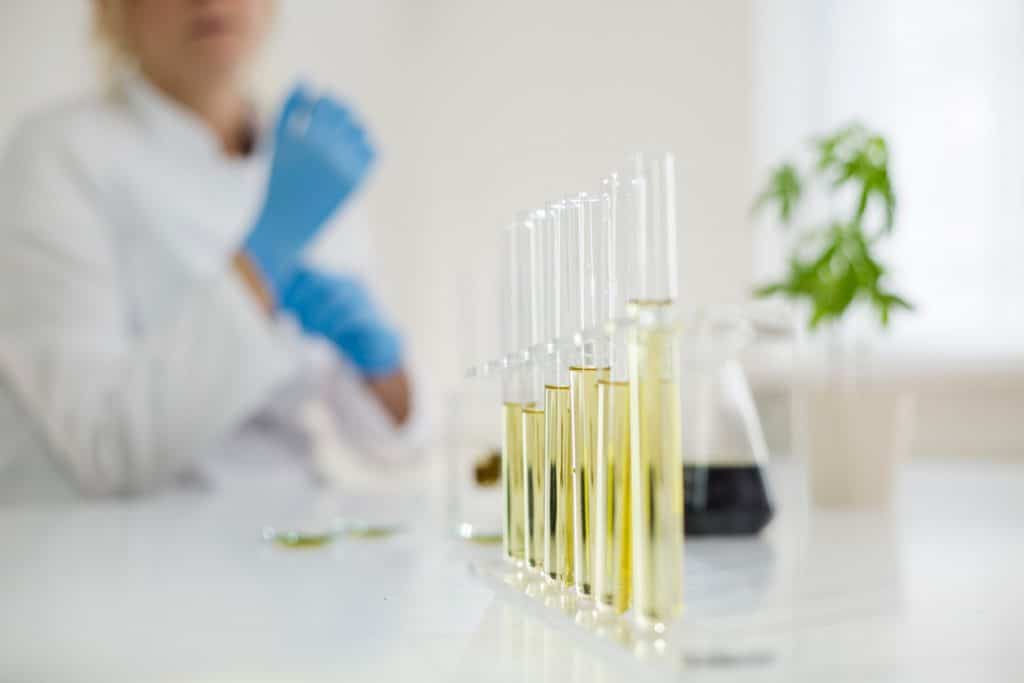By: Paul Stevenson
Now that you have read Part I of the Revised TDA Hemp Production Plan series on the application and license requirements for hemp producers, it is crucial to understand the rules and methods for the sampling and testing of hemp for tetrahydrocannabinol (“THC”) concentration levels.
If in violation of the TDA’s sampling and testing provisions, hemp license holders might be subject to serious consequences such as enforcement action, corrective action plans, and/or criminal liability. Violations will be discussed further in Part III of this Series, but hemp license holders may avoid them if they simply comply with the following provisions.
Inspections, Harvests, and Sampling Collections
Now that you are a hemp license holder, you are almost ready for harvest; however, you first need to ensure your hemp crops are in compliance with the TDA’s sampling and testing standards.
The TDA appears to adopt USDA’s regulations on hemp inspections. Essentially, the TDA, DEA, DPA, and local law enforcement have unrestricted access to randomly inspect all hemp plants grown or harvested by hemp license holders and all facilities and locations where hemp is produced or stored. For scheduled sampling collections, “[T]he producer or an authorized representative of the producer shall be present at each lot undergoing sampling and testing.” 4 TAC § 24.20(c).
For sampling and collection purposes, hemp license holders are to submit a completed sample request form to the TDA at least 15 days prior to harvest, which, upon receipt of this form, will trigger a site inspection and sample collection by the TDA. See id. at § 24.21(a). The TDA will determine what exact material shall be selected for sampling. Additionally, “If the license holder fails to complete harvest within fifteen (15) days of sample collection, a secondary sample of each lot to be harvested shall be collected and submitted for testing. Id. at § 24.21(b)(2). For this secondary sampling and collection to occur, the hemp license holder must notify the TDA of the harvest delay and submit another sample request form. See id. The TDA will typically only grant up to two sample requests per lot and separate samples must be taken from each lot. Moreover, all samples are to be “be labeled and prepared for transport to the laboratory for testing in accordance with the Department’s Sampling and Collection Procedure.” Id. at § 24.21(b)(5).
Under the TDA plan, hemp license holders are mandated to submit lot reports to the TDA “no later than the 30th day after a final sample is collected from a lot, or no later than 180 days from the lot permit issue date, whichever is earlier.” Id. at § 24.22(a). Regarding the particular lot, the following information must be included in a lot report:
(1) license holder account number;
(2) facility ID and lot ID;
(3) sample(s) ID(s) and test ID(s);
(4) disposition of cannabis plant materials produced or handled within the lot (e.g. harvest, disposal, transplanting, cloning, distribution, processing, sale, or other use) and any Department-issued transport manifest;
(5) total acres or square footage of cannabis plant material produced or handled; and
(6) a certified statement indicating whether or not any living cannabis plants remain in any lot identified in the lot report. In the event any living cannabis plants remain in any lot identified in the lot report, the license holder shall further provide a certified statement indicating whether the license holder intends to dispose of or cultivate the remaining, living cannabis plants. Id. at § 24.22(b).
Additionally, hemp license holders must report and certify in the lot report any disposal of cannabis plants, including a description of the date and method of disposal. See id. at § 24.22(c). If a hemp license holder plans to cultivate any remaining, live cannabis plants, they have to register the locations of these live cannabis plants “as new lots and pay the applicable participation fee.” Id. at § 24.22(d).
Hemp license holders must wait to harvest their hemp crops until samples have been collected. After the samples have been collected, the hemp license holder must harvest the crop within 15 days of that sample collection, unless TDA authorized otherwise. See id. at § 24.23(b). Before any processing occurs, hemp license holders need to ensure that any cannabis from harvested lots must not be commingled with other material or with cannabis from any other harvested lot. Harvested hemp plants cannot be sold or used by hemp license holders until “a test of the sample(s) for the lot associated with the harvested plants is at or below the acceptable hemp THC level.” Id. at § 24.23(d).
Testing for TDA’s Acceptable Hemp THC Level
The TDA’s provisions on the testing of hemp plants are complex, but we are here to walk you through what they entail and what is required to be compliant with the TDA’s hemp production plan.
Before any testing occurs, hemp license holders must ensure the laboratories that will be testing their hemp samples and hemp plants are independent, registered testing laboratories. Independent testing laboratories must complete and submit a form provided by the TDA for registration, and they “must be accredited by an independent accreditation body in accordance with International Organization for Standardization ISO/IEC 17025 and must be registered with DEA.” Id. at § 24.24(a)(3). If a hemp license holder selects an independent, registered laboratory to conduct testing, the hemp license holder shall not have any ownership interest in the laboratory, and if the laboratory is a publicly traded company, the hemp license holder shall not have 10 percent or more ownership interest. See Tex. Agric. Code § 122.151(c). Additionally, if a hemp license holder uses a registered laboratory’s testing services, she will be required to pay that laboratory’s applicable fees. According to the TDA, a list of all TDA-registered laboratories will be posted on the TDA’s website. Lastly, a hemp license holder has the option of testing their hemp samples at the State of Texas Laboratory (“State Laboratory”) as long as they pay the applicable fees. The State Laboratory, which must be registered with DEA, will also be used for testing if a hemp license holder fails to use a registered laboratory. See 4 TAC § 24.24(c).
Any laboratory testing hemp samples must do so in accordance with the TDA’s “Testing Procedure.” Moreover, using a form provided by the TDA, the laboratories must maintain a “chain of custody” of each sample, and they must “retain the sample for a minimum of thirty (30) business days from the sample collection date.” Id. at § 24.27(c).
Analytical testing for delta-9 tetrahydrocannabinol (“THC”) will be conducted on the flower material of the cannabis plants, and the testing must meet the following standards:
(1) laboratory quality assurance must ensure the validity and reliability of test results;
(2) analytical method selection, validation, and verification must ensure that the testing method used is appropriate (fit for purpose) and that the laboratory can successfully perform the testing;
(3) the demonstration of testing validity must ensure consistent, accurate analytical performance; and
(4) method performance specifications must ensure analytical tests are sufficiently sensitive for the purposes of the detectability requirements of this subchapter. Id. at § 24.25.
Additionally, independent, registered laboratories are required by the TDA to follow certain testing procedures, such as:
[A]nalytical testing of samples for delta-9 tetrahydrocannabinol concentration levels must use post-decarboxylation or other similarly reliable methods approved by the Department . . . [and] [t]he testing methodology must consider the potential conversion of delta-9 tetrahydrocannabinolic acid (THCA) in hemp into delta-9 tetrahydrocannabinol (THC) and the test result reflect the total available THC derived from the sum of the THC and THC-A content. Testing methodologies meeting these requirements include, but are not limited to, gas or liquid chromatography with detection. Id. at § 24.26(b)-(c).
Identical to the USDA plan, TDA’s revised proposed rules clearly state that THCA will count towards total THC content.
Furthermore, these independent, registered laboratories must use validated methods for all testing activities to measure the “acceptable hemp THC level” of license holders’ hemp plants. Under the TDA plan, “acceptable hemp THC level” is defined as the following:
[A] delta-9 tetrahydrocannabinol content concentration level on a dry weight basis, that, when reported with the laboratory’s measurement of uncertainty, produces a distribution or range that includes a result of 0.3% or less. For example, if the reported delta-9 tetrahydrocannabinol content concentration level on a dry weight basis is 0.35% and the measurement of uncertainty is +/- 0.06%, the measured delta-9 tetrahydrocannabinol content concentration level on a dry weight basis for this sample ranges from 0.29% to 0.41%. Because 0.3% is within the distribution or range, the sample is within the acceptable hemp THC level for the purpose of plan compliance. This definition of “acceptable hemp THC level” affects neither the statutory definition of hemp, in 7 U.S.C. §1639o(1) and Texas Agriculture Code §121.001, nor the definition of “marihuana,” in 21 U.S.C. §802(16) and in Texas Health and Safety Code §481.002(26). Id. at § 24.1(2).
Thus, since this definition of acceptable hemp THC level does not affect certain state and federal criminal definitions of “hemp” and “marihuana,” hemp license holders need to remain diligent in keeping their hemp plants at or below a 0.3 percent THC concentration level. This definition of acceptable hemp THC level is simply a method of tracking the unreliability of test results, and it provides flexibility via the “measurement of uncertainty,” which acts as a margin of error in evaluating the accuracy of test results. Reported levels of THC concentration might not be the sample’s actual concentration…the actual THC concentration falls within a range as determined by the combination of the acceptable hemp THC level and the measurement of uncertainty.
Excessive THC Levels and Proper Disposal Methods
Within 14 days of the sample collection date, the testing laboratory must send the test results to the TDA and the hemp license holder. Under the TDA plan, if there is a showing of at least 95 percent confidence that a sample test result exceeds the acceptable hemp THC level, then the TDA will consider this to be conclusive evidence that one or more cannabis plants within the tested lot contains an excess of permissible THC concentration. The laboratory then must “promptly notify” the TDA and the hemp license holder that the THC concentration level exceeds the acceptable hemp THC level. See id. at § 24.28(c).
Within five days of receiving the results of the first test of the original sample, a hemp license holder can request a retest. See id. at § 24.29(a). The hemp license holder must use the same laboratory that conducted the first test, that laboratory must use the original sample from the first test for the retest, and the retest results are to be considered final. See id. at § 24.29(b)-(d).
Within seven days of a hemp license holder receiving the above-mentioned final test results, the hemp license holder must submit a completed “disposal report” to the TDA. See id. at § 24.30(a). Upon receiving this “disposal report,” the TDA may potentially send an authorized inspector for a field inspection. Additionally, within seven days of receiving the “disposal report,” the TDA will inform the hemp license holder of the proper methods of disposal. See id. at § 24.30(c).
Typically, the TDA will send a notice of disposal to the non-compliant hemp license holder. Within five days of receiving this notice of disposal, the hemp license holder must contact a DEA-registered agent or other authorized entity to carry out the disposal process. See id. at § 24.31(c)(1). Furthermore, hemp license holders must pay any disposal fees and must notify the TDA and the USDA of their intent to dispose of any non-compliant plants and verify it with proper documentation. See id. at § 24.31(d).
Preview of Part III:
In Part III, the final section of this Series, we will analyze the provisions of the TDA plan regarding negligent violations and license suspension and revocation. Lastly, we will explore the TDA’s requirements relating to the transportation of hemp, as well as the rules and regulations concerning hemp seed.








